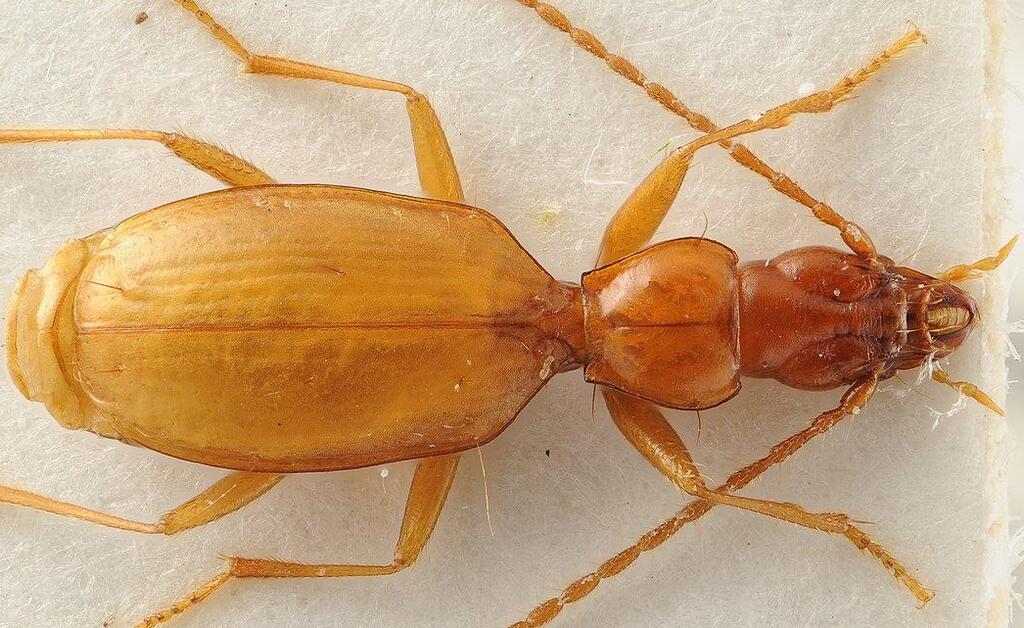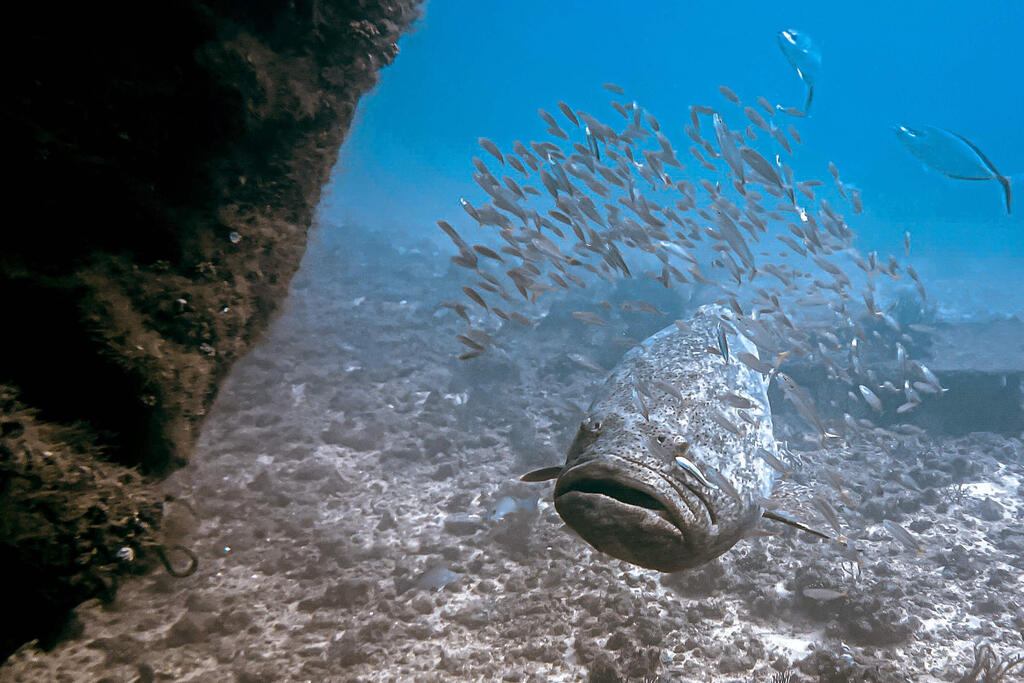Getting your Trinity Audio player ready...
The beetle Anophthalmus hitleri, or "Hitler bug" for short, may not resemble the tyrant in appearance, but its scientific name drove it to near extinction due to the enthusiasm of neo-Nazi collectors.
Read more:
Currently, there's a heated debate across journals featuring articles and petitions from scientists and researchers on both sides of the fence: those advocating for changing the beetle's name to put an end to the illegal trade, and those who argue that yielding to public pressure to change names based on ethical reasons can cause serious "distortions" in biodiversity research, potentially impacting hundreds of thousands of established scientific names.
It all began in 1937 when amateur entomologist Oskar Scheibel added an unusual insect to his collection: a rare, blind cave beetle from Slovenia. The Austrian engineer named this tiny brown beetle Anophthalmus hitleri. The first word is derived from the Greek term for "eyeless," and the second is after the then-leader of Nazi Germany, Adolf Hitler. Even though Hitler was likely preoccupied with plans to invade Poland, he found the time to write Scheibel a thank-you letter for his dedication.
In the following decades, many in the taxonomic community - those responsible for naming new species - sought to erase any reference to the name associated with the man responsible for the Holocaust. Over the years, an even more acute dilemma arose: the beetle was nearly driven to extinction due to neo-Nazis who began to illicitly pursue and collect it, solely because of its infamous scientific title.
Reports of obsessive collectors date back nearly 20 years. European media then reported that enthusiasts were traversing 15 Slovenian caves in search of the “Hitler bug." Some well-preserved samples captured at the time were valued at about $1,400 each (equivalent to roughly $2,080 today).
Gradually, crowds began to flock to the caves, sometimes waiting for months just to catch a single beetle. Most of these were not necessarily ardent neo-Nazis, but simply individuals hoping to profit from the Nazi memorabilia market.
This frenzied pursuit led collectors to break into the homes of other collectors just to steal the beetle under the cover of night. Slovenia was compelled to outlaw the collection of this beetle, but this measure had limited effectiveness, as just a few miles away across the Italian border, the hunt was still permitted.
Eventually, Europe's stock dwindled, and all specimens of the beetle that were housed in the Bavarian State Collection of Zoology in Germany were completely stolen.
In response, an increasing number of scientists began to publicly advocate in reputable journals for the protection of the creature and to change its name. However, the Hitler bug is not alone. There are countless other species named after individuals and places that reflect racial, sexual or colonial biases which are now considered wholly taboo.
In Israel, many are familiar with "Khomeini," a rat-sized cockroach named due to its brown color (Khum in Hebrew), its Iranian origin, and the fact that it was discovered around the time of the 1979 Iranian Revolution led by Ayatollah Ruhollah Khomeini.
In Libya, there is Hypopta mussolini, a butterfly named after the fascist leader Benito Mussolini. In America, there was, until recently, the "Jewfish," the official name given to the massive Atlantic Goliath grouper by the American Fishing Association. In Africa, there's the plant Plantago cafra, whose name is derived from a South African derogatory term against black people.
However, there are also less controversial figures who receive such honors. In 2011, a horse fly discovered in Australia was named Scapia beyonceae after Beyoncé. The researcher claimed that the fly's dense golden hairs on its abdomen reminded him of the "legendary performer."
For those less into the genre, there's Hyla stingi, a frog named after Sting, or an ant discovered in the Golan Heights called Gil Ofarim after the Israeli singer. In 2016, a researcher named a flatworm after Brad Pitt because a poster of him adorned the wall of her lab throughout her doctoral studies. A type of worm is named after Barack Obama, and a fish is named after the couple, Michelle and Barack, together.
A sea slug discovered during the Russian invasion of Ukraine is named after Volodymyr Zelensky. A fast-winged fly is named after Roger Federer, a spider is named after Angelina Jolie, a water bug is named after J.K. Rowling, a seahorse is named after Greta Thunberg, and the list goes on and on (and for those who want to burn a few good hours of their lives, the list can be found in its entirety on Wikipedia).
In 1994, a fossilized lake fly was originally named 'I,' until the researcher realized it wouldn't be appropriate to write 'I have a small male sex organ,' and changed it to Lyaiyai. True story
Scientists studying crabs in Taiwan discovered a small crab and named it Albunione yoda because the curved lateral rostrum on its head reminded them of the "long fallen ears" of Yoda from Star Wars. In 1994, a fossilized lake fly was originally named "I," until the researcher realized it wouldn't be appropriate to write "I have a small male sex organ," and changed it to Lyaiyai. True story.
In India, it's not uncommon to find species named after famous Bollywood actors, cricket players and local politicians. Sometimes, the goal is to generate interest among research students and make the task of insect identification easier.
By the way, one taboo extends globally: the International Code of Zoological Nomenclature (ICZN), which sets standards for naming species, prohibits naming species after religious figures like Jesus or Muhammad, for example.
However, this practice of naming species after humans sparks heated debates within the taxonomy community. Some wonder why this antiquated tradition is still in use, while others criticize the naming process, arguing that making retroactive changes based on subjective emotions will disrupt communication within and outside the scientific community.
The latest battleground for this debate unfolds in the prestigious Zoological Journal of the Linnean Society, published by the University of Oxford. In an op-ed in the January issue, 26 established scientists expressed their reservations about the current naming practice. They claimed that succumbing to public pressure to change names for ethical reasons would lead to "serious disruptions" in biological research, as there are hundreds of thousands of accepted scientific names that would meet the same criteria.
According to these scientists, arguing against changing offensive names historically hinders the evolution of taxonomic science and contradicts progress in nomenclatural processes achieved in the last 50 years.
All the signatories are members of the ICZN board, which is believed to oversee this matter but in practice serves as a kind of court, with the ability to influence only disputes brought before it. The signatories cited the ICZN's "fundamental purpose" of "promoting stability without imposing taxonomic judgment."
A few months later, in August, a response letter was published in the same journal. Eighteen scientists signed an article that challenged concerns of "disruptions" in science due to changes in names and dubbed it "completely speculative."
According to these scientists, arguing against changing offensive names historically hinders the evolution of taxonomic science and contradicts progress in nomenclatural processes achieved in the last 50 years.
"The notion that stability is an important universal pillar of biological nomenclature should not take precedence over basic principles such as accuracy, change, and ethics, including preference and equity,” they wrote.
Some researchers are already contemplating a practical solution and are calling for the establishment of a review committee to examine all the contentious names and make recommendations for changes. Here, too, there is disagreement within the scientific community, with some arguing that such a process could become too political.
Instead, they suggest allowing time to work and changing names as scientists discover new distinctions between species, as has happened with dinosaur names that have evolved as paleontologists have classified them more precisely.
In the meantime, the Hitler bug roams the dark caves of Slovenia, oblivious to all that transpired and to the fact that its existence was condemned by the folly of man.




